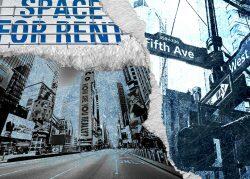The number of chain stores and restaurants in New York City increased this year in a welcome sign for retail landlords after four straight years of declines.
The bar was set pretty low. The 2.7 percent year-over-year increase pales in comparison to last year’s 12.8 percent decline, according to a report by the Center for an Urban Future.
Chains added 190 locations across the five boroughs as the pace of commercial activity picked up following 2020, the most challenging year on record, when one in every seven chain stores was forced to close. Chain stores were on a downward trajectory even before the pandemic, with the city seeing a 3.7 percent decline in locations in 2019 and a 0.3 percent dip in 2018.
But in addition to the 190 new store and restaurant openings, more than a quarter (260) of the 1,021 locations that shuttered in 2020 reopened this year.
Several chains now exceed their pre-pandemic store count, including Pret A Manger, Shake Shack, Insomnia Cookies, Papa Johns and Kiehl’s. Those with the most openings included streetwear brand Jimmy Jazz (with 31 new stores), Taco Bell (28), Pret A Manger (23), Le Pain Quotidien (23), Pizza Hut (22), Subway (21), Enterprise (20), Soul Cycle (19) and Popeye’s (18).
Additionally, fewer national retailers shut down altogether this past year, with just eight chains exiting the city entirely, compared to 27 last year. Among them were Century21 — which filed for Chapter 11 bankruptcy and shuttered all of its stores last year, including its five New York City locations — Kenneth Cole, French Connection and Fossil.
Though the number of chain store locations increased from 6,970 at the end of 2020 to 7,160 this year, that figure is still 10 percent below the 7,948 chain stores in 2019 and 12 percent below the 8,136 chain stores in 2018.
Staten Island saw the fastest rate of increase this year, with its chain store footprint jumping by 4.5 percent, or 19 stores. Brooklyn added 43 stores, Queens added 31 and the Bronx added 11. After accounting for more than half of all closures in 2020, Manhattan represented 45 percent of the growth in 2021. None of the boroughs, however, were able to return to 2019 levels.
Read more


